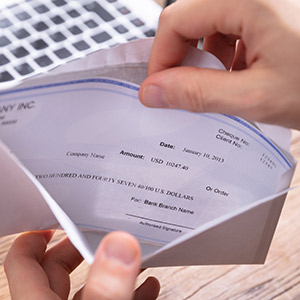
As part of the $2 trillion CARES Act that was signed into law Friday, the Small Business Administration (SBA) is backing $350 billion in emergency loans meant to encourage small businesses to retain their employees.
The new Paycheck Protection Program loans are different than the Economic Injury Disaster Loan (EIDL) program for small businesses that JCK wrote about Friday.
What makes the Paycheck Protection loans particularly attractive is, if businesses don’t slash their payrolls through June 30, they can apply for loan forgiveness—basically turning the loans into grants.
The forgiveness depends on several factors. For instance, businesses that reduce employees’ wages or cut people from their payrolls will have the forgivable amount reduced. That reduction can be reversed if the businesses rehire employees or restore their salaries.
In addition, to receive loan forgiveness, the businesses must document that the money was spent on payroll, health care costs, and other expenses such as loans and utilities.
(NOTE: On Tuesday, the U.S. Treasury issued new guidance on the program which provides more information on the program as well as changes some aspects. Our new story summarizing those changes can be seen here,)
Other things you should know about the Paycheck Protection Program:
– The loans are available to any business with 500 or fewer employees that can demonstrate “economic uncertainty” due to COVID-19. (For most businesses, especially those subject to mandatory closure, this will not be difficult.) That 500-employee number includes full- and part-time workers. The loans are also available to sole proprietorships, the self-employed, and gig workers. The businesses will have had to be operational as of Feb. 15.
– The loans can cover up to 2.5 times the business’s average monthly payroll cost in 2019, with a cap of $10 million. Payroll costs are defined as not just wages, but money paid for sick leave and other benefits.
– No collateral or personal guaranty is required for the loan.
– The Payroll Protection Program interest rate is capped at 4% and has a time frame of up to 10 years. (UPDATE: The PPP interest rate has now been changed to a flat 0.5%, and the timeframe lowered to two years.) Of course, if the business receives all or partial loan forgiveness, the interest rate might be moot.
– Businesses can defer repayment for up to a year.
– There are no borrower or prepayment fees.
– While the EIDL loans are administered solely through the SBA, the Paycheck Protection loans are offered by SBA-certified lenders, including banks, credit unions, and other FDIC-insured financial institutions. You can find certified lenders through the SBA’s Lender Match tool.
Another difference: Businesses can apply for the EIDL loans—which, now that the CARES Act has passed, include $10,000 grants—right now. The Paycheck Protection Program is still new, and the SBA hopes to launch it by Friday.
All this can be confusing for businesses: Which of these new SBA loans—if any—are right for them? On top of that, many localities are offering generous loans to small businesses. (A comprehensive list of local small business loans be seen here.)
Experts advise businesses to consult with their accountants, attorneys, bankers, or local SBA Small Business Development Center. The U.S. Chamber of Commerce is offering a small business loan checklist, which can be seen here.
Businesses can receive both EIDL and Paycheck Protection loans, as long as they don’t go toward the same expenses. They can also apply for both programs and don’t have to accept anything that’s offered.
A side-by-side comparison of the two programs can be seen here.
A Congressional FAQ on how to apply for the Paycheck Protection Program can be seen here. Other summaries of the program can be seen here, here, and here.
(Photo: Getty Images)
Follow JCK on Instagram: @jckmagazineFollow JCK on Twitter: @jckmagazine
Follow JCK on Facebook: @jckmagazine